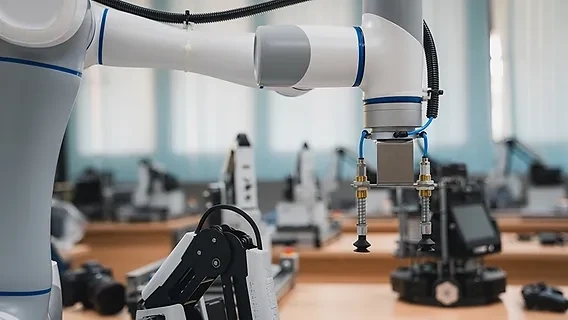In today's high-tech era, robotic arms have become the cornerstone of modern precision manufacturing. Whether in aerospace, automotive, electronics, or medical device production, robotic arms are setting new standards for speed, accuracy, and consistency. Manufacturers worldwide are embracing this advanced technology to outperform competitors and meet growing market demands.
Why Robotic Arms Matter in Modern Manufacturing
Manufacturing processes have evolved significantly over the last decade. With customer expectations rising and tolerances becoming tighter, the need for precision has never been more critical. Robotic arms provide the repeatability, reliability, and pinpoint accuracy that human hands simply can’t match — especially when working at scale.
These robotic systems excel in tasks like assembly, welding, painting, picking and placing, and quality control. They operate 24/7 without fatigue, deliver consistently high performance, and reduce the margin of error to near zero.
Enhanced Efficiency and Speed
One of the main reasons manufacturers invest in robotic arms is to boost productivity. Unlike human workers, robotic arms don't take breaks or suffer from performance dips. They can be programmed to carry out highly repetitive tasks with exceptional speed and precision. For industries where every second counts — such as electronics and semiconductor fabrication — this time-saving capability results in major competitive advantages.
In fact, leading production plants have reported up to a 40% increase in output after integrating robotic arms into their workflows.
Reducing Operational Costs
While the upfront investment in robotic arms may seem steep, the long-term cost benefits are substantial. Companies that implement robotic automation often experience lower labor costs, fewer mistakes, reduced waste, and shorter production cycles. The return on investment becomes evident within months.
Moreover, robotic arms reduce the need for rework due to human error, which can otherwise lead to material loss and delays in delivery. They also help companies avoid downtime associated with manual labor shortages — a common issue in today’s global labor market.
Supporting Human Workers, Not Replacing Them
A common misconception is that robotic arms will replace human jobs. In reality, they’re tools designed to support skilled workers, not eliminate them. By taking over the dangerous, dull, or repetitive tasks, robotic arms free up human workers to focus on higher-value responsibilities like quality inspection, creative problem-solving, and advanced machinery supervision.
This collaboration between humans and machines is creating safer workplaces and more satisfying job roles for employees.
Applications Across Industries
From assembling tiny circuit boards to welding car frames with micron-level precision, robotic arms are being applied across a range of industries:
- Automotive: Streamlining parts installation and painting with perfect consistency.
- Electronics: Placing micro-components on circuit boards with ultra-fine precision.
- Healthcare: Assisting in the manufacture of surgical tools and medical implants.
- Aerospace: Ensuring zero-defect construction of complex aircraft parts.
Each of these industries depends on robotic arms for tasks where human precision would fall short — or where even the slightest error could lead to significant losses.
Final Thoughts
As we move deeper into the era of smart manufacturing, robotic arms are no longer optional; they’re essential. Their role in achieving higher productivity, better quality, and lower operational costs is transforming how factories operate around the globe.


